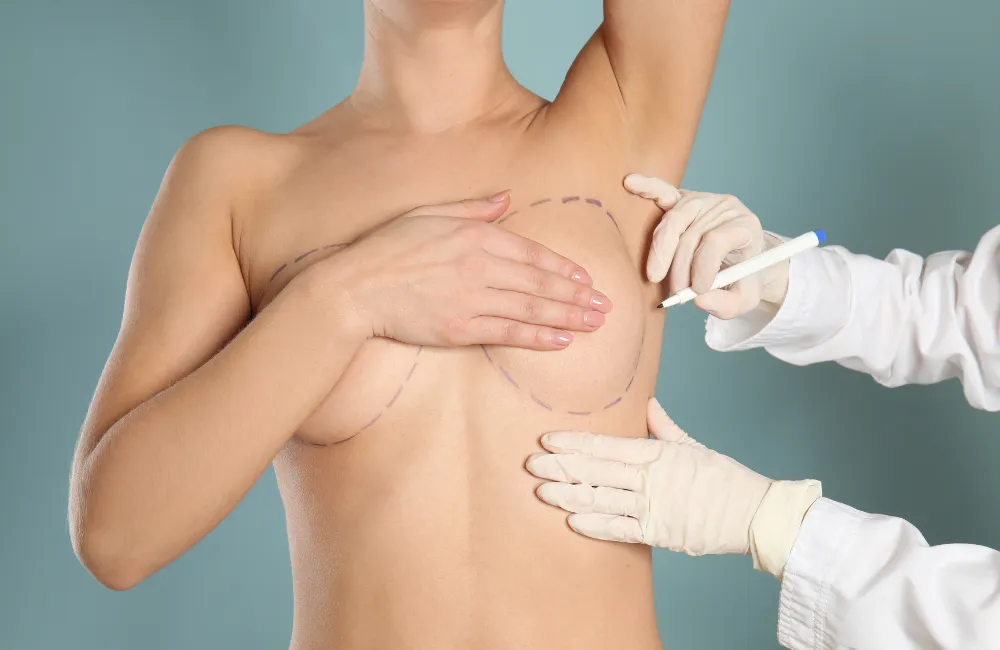Can I Get a Mammogram If I Have Breast Implants?
By Partington Plastic Surgery on April 25, 2024 in Breast Implants

Maintaining breast health is important for general wellness, especially when we prioritize mammograms for early detection. For women who have breast implants, however, concerns regarding whether a mammogram is feasible typically surface. Do implants impact the procedure? Are there any unique considerations?
Mammograms for breast implants are absolutely possible, and you can still get a mammogram if you have breast implants. Today, we will explain everything from how the procedure works to screening recommendations.
What Is a Mammogram and Why Is It Important?
Designed specifically to find anomalies in breast tissue, a mammogram is an X-ray test. Mammograms can detect masses, calcifications, or tissue abnormalities that need additional examination.
One of the best instruments for early identification of breast cancer, regular mammograms for breast implants greatly increase the success rates and results of therapy.

How Do Breast Implants Affect Mammogram Results?
Implant materials may obscure breast tissue during a mammography. Despite that, mammograms are a great tool for identifying breast cancer in women who have silicone implants. Improved visibility is often achieved using implant displacement views. These alternative mammograms for breast implants are meant to gently move the implants such that more of the tissue may be seen in the images. Breast radiologists are trained to spot problems despite implants in breast tissue visibility.
Special Considerations for Women with Breast Implants
Types of Breast Implants and Their Impact on Mammograms
Because of their denser composition, these implants can occasionally hide breast tissue during imaging, which makes problems more difficult to find. These implants are less thick but might still make visualization challenging, depending on placement.
Silicone implants call for alternative mammograms for women with breast implants to guarantee that every part of the tissue is sufficiently inspected. The mammography facility must know the type of implants to help the mammogram technologist use the best protocols for clear, accurate results.
Recommendations for Women with Implants
Women who have breast implants can follow particular guidelines to guarantee a seamless and efficient mammography process.
- Make sure the radiology center knows about implants before you schedule.
- Tell the technician straightforwardly on the day of the mammography regarding the kind and position of your implants.
- Maintain correct placement during imaging to collect as much breast tissue as possible without pain.
Women should not hesitate to communicate any worries or discomfort during the procedure to guarantee that the process is both thorough and tolerable.
Natural Look
Confident Beauty
24 Hour Rapid Recovery, Muscle Sparing.

Additional Imaging Techniques to Consider
While mammograms are the standard for breast cancer screening, women with implants may need extra imaging to improve visibility.
- Ultrasonography is a typical additional option that provides detailed images of dense breast tissue.
- Another improved breast imaging technology, Magnetic Resonance Imaging (MRI), can reveal problems concealed by implants.
It is essential to discuss the ideal imaging plan with a healthcare professional since a customized approach may combine numerous methods to guarantee reliable results.
What to Expect During a Mammogram with Breast Implants
Alternative mammograms for breast implants are slightly modified but straightforward:
- Preparation: Tell the clinic about your implants during appointment booking.
- Positioning: A mammography technician will carefully shift the implant to the side (implant displacement technique) to capture as much tissue as possible.
- Extra Views: Usually, additional images are taken to guarantee complete examination of every area of the breast.
How the Procedure Differs from Standard Mammograms
Women with implants require more photos than non-implanted women. This guarantees that the X-ray catches the parts of the breast tissue underneath the implant from front to back. Scar tissue surrounding a breast implant may make mammograms more painful or difficult to get. The extra stages may lengthen the process, but they’re necessary for complete screening.
Alternatives to Mammograms for Breast Implants and Supplemental Screening

Interpreting the Results of a Mammogram with Implants
Once the mammography is finished, a radiologist closely reviews the images to find any anomalies or changes in the breast tissue, including areas covered by implants. Implants make it harder to identify anomalies in mammograms, therefore, they must be interpreted carefully.
Using their knowledge and specific methods, radiologists can separate possible problems from normal variances in breast tissue. The patient is usually cleared until their next routine test if the results are normal. If something odd is found, though, more action will be taken to evaluate the circumstances.
When Additional Testing is Needed
If the mammography finds anomalies like odd lumps, asymmetries, or changes in tissue density, further testing could be advised.
Although mammograms for breast implants are a vital tool for screening breast cancer, people with implants have other choices besides them. Ultrasound and breast MRI can supplement imaging in specific situations:
- Ultrasound: Perfect for assessing particular problems or areas hidden by implants or dense breast tissue on a mammogram.
- Breast MRI: Very comprehensive imaging is advised for women at higher risk for breast cancer or when an anomaly needs confirmation.
When regular imaging isn’t enough, these methods are sometimes employed in tandem with mammograms to provide a more complete assessment.
How Often Should Women with Implants Get Screened?
Mammography screening guidelines for women with implants are identical to those without them, however, frequency may vary. For women over 40, annual mammograms are recommended. Consult a doctor to determine a screening plan that balances effective detection with personal needs.
Frequently Asked Questions About Mammograms with Breast Implants
Are Mammograms Safe for Breast Implants?
Mammograms are safe for those with breast implants. Although compression might be uncomfortable, problems like rupture are rare under the direction of experienced healthcare professionals.
Is It More Painful To Get A Mammogram With Implants?
Mammogram discomfort varies, especially among breast implant patients. The compression may be uncomfortable, but it’s usually no worse than a mammography. Sharing any discomfort with the specialist might improve the experience.
What Type of Mammogram is Best for Breast Implants?
Implant displacement mammograms are excellent for breast implant patients. A thorough and safe screening without implant damage is achieved by repositioning the implant to better examine breast tissue.
Taking Charge of Your Breast Health with Implants
Mammograms are still recommended for breast implant patients. Safety and efficacy of implant displacement mammograms for breast implants are achieved. These procedures guarantee complete imaging without sacrificing the implants, enabling accurate and thorough evaluation.
Managing breast health with implants requires open communication with your doctor. Talk about your alternatives for a mammogram and any concerns you have. Your healthcare professional can help you choose the optimal screening methods. One of the most proactive steps you can take for your general health and peace of mind is keeping on top of your tests; regular mammograms remain a critical tool for early identification of possible problems.
At Partington Plastic Surgery & Laser Center, we understand and support your personal journey, thus, we believe in offering treatment that goes beyond mere medical procedures.
Return to Overview
